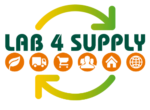Video Capsule #1: Intervention at the Horticultural Congress on Commercialization
Intervention by Professor Zein Kallas during the session dedicated to commercialization as part of the First Horticultural Congress of Catalunya, organized by the Polytechnic University of Catalonia and RuralCat – Generalitat de Catalunya (Constantí, October 25, 2023).
“FACTORS DETERMINING THE ADOPTION OF INNOVATIONS IN THE AGRICULTURAL SECTOR”
FIRST KEY IDEA
1. What determines the adoption of innovations by farmers?
70% of farmers’ decision to adopt an innovation is due to economic factors: more income, access to new markets, cost reduction and diversification of production.
Resolving environmental problems is also important: reducing the use of water and phytosanitary products, etc. This could be an anticipation of increasingly restrictive environmental measures.
Socio-cultural aspects are less important.
Farmers wish to visualise the innovations applied before making the decision.
Key idea: economic viability is key when it comes to promoting innovation in agricultural production.
SECOND KEY IDEA
2. How Do Farmers And Consumers Prices Respond To Changes In The Market?
Analysis of the weekly prices received by farmers and paid by consumers (Ministry of Agriculture).
Analysis of price changes: When the producer price rises, the consumer price rises immediately and intensively.
Analysis of price changes: When the consumer price rises, the producer price rises later and less intensively.
Key idea: farmers have limited bargaining power over market prices.
THIRD KEY IDEA
3. What Interest Do Consumers Have in Local Produce?
- Using the Analytic Hierarchic Process (AHP), we have asked consumers about their preferences when shopping.
40% of the purchase decision is economic (price, proximity to home). However, 13% take into account that the price is fair for the producer and 12% that it is locally produced.
The organoleptic perception of tomato increases positively when the consumer is informed that the product is local.
However, this does not usually correlate with consumers’ purchasing habits (weight of price in the final decision).
Key idea: there is a tendency among consumers to favour local products but this does not translate to the market.
FOURTH KEY IDEA
4. Quantifying Food Waste In The Tomato Value Chain
70% of the tomato (for fresh consumption) that remains in the field is due to oversupply.
Some of the causes of oversupply may be aesthetic requirements, low prices or competition from exported tomatoes.
Catalonia is not self-sufficient in tomato production.
Key idea: 25 million euros are lost annually in Catalonia in uncollected fresh tomatoes.
